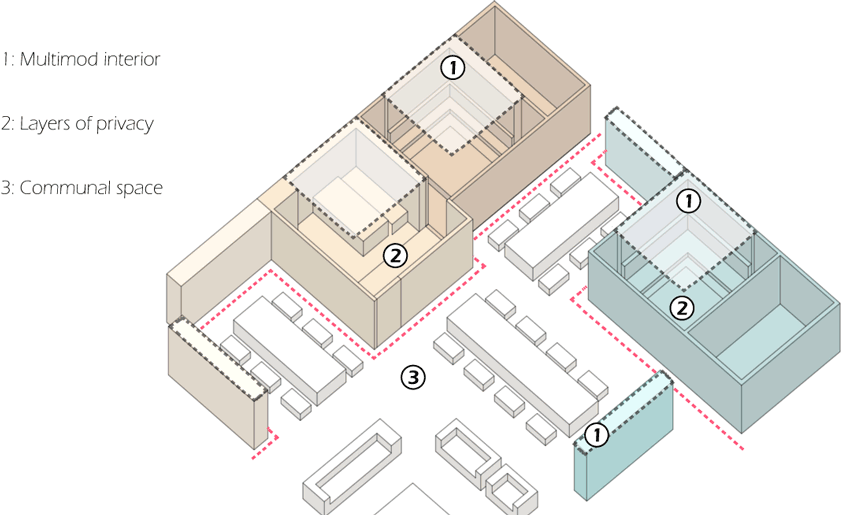Difference between revisions of "project05:Frontpage"
| Line 57: | Line 57: | ||
- Playing | - Playing | ||
| − | [[File: | + | [[File:NvanDorp_Spatial.gif| 850px]] |
Revision as of 23:01, 24 October 2016
Nick van Dorp
A SYSTEM TO USE EMPTY OFFICE-SPACE AS A HOST FOR REFUGEE HOUSING
THEME: SMART-Environments
LOCATION: EUROPOINT-Towers, Rotterdam (formerly known as Marconitorens)
ABSTRACT
Refugees, who fled from their country, have often experienced unimaginable tragic events. After a long and fatiguing journey, and likely to be traumatized and exhausted, they arrive at a place where food, shelter and various services are provided. Amongst them are mostly kids, for whom these events will form a memory which will be with them for the rest of their lives. However, right now these environments are set up in short time with little attention for spatial hierarchies, individually varying specific demands, privacy and social safety. For kids, the world suddenly becomes no bigger than the camp they live in, which detrimental for their personal development. However, in the Netherlands, almost 15% of total office space is unused. Maintaining these spaces costs money and energy. Using these spaces for refugee housing would be a win-win situation.
GOAL:
A INTEGRATION CENTER THAT PROVIDES HIGH DENSITY DWELLING AND COMMUNAL FACILITIES FOR FAMILIES IN A RECONFIGURABLE SPACE
Parametric design and D2RP could streamline the design- and production-process to be more fitting to the needs of (traumatized) refugees, by rapidly generating and producing custom made living units and organizing them in a suiting formation in relation to their neighbours and the communal space.
Key tasks for now are researching: the exact problems and needs of refugees; the amounts of refugees that arrive in and leave from camps; the composition and origin of families; the way refugees use their units' facilities; the spatial and sustainable possibilities to use office-space as a host.
SPATIAL CONCEPT
1. Dwellings have furniture that can fold in and out, to minimize the needed floor area.
Like in other multi-modal dwellings, occupied space can be minimized by combining functionality. The dwellings will be tailor made for the habitants. This is the first step to reduce the floor area.
2. Dwellings have different layers of privacy. These layers can be opened up. Doing so will result in more communal space.
The second step, to minimize the needed floor area, is to add any space that is not in use, or is given free by the inhabitants, to the communal space. Also, this is a way to promote transparency, collaboration and communication, which can improve the integration process.
3. Communal space is formed from the counter-form of dwellings. It will provide space for social activities, like:
- Working - Meeting - Learning language - Workshops - Eating or feast - Playing
REFERENCES
Study Marconitorens - Maria Haag Architectuur - http://mariahaag.nl.server4.starthosting.nl/Marconitorens_Studie.pdf
Statistics Refugees - Vluchtelingen Werk Nederland - http://www.vluchtelingenwerk.nl/sites/public/u895/Vluchtelingeningetallen2016.pdf

